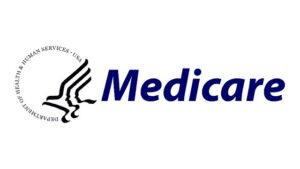Trusted Moving Solutions in the Bay Area: San Leandro Movers and Alameda MoversTrusted Moving Solutions in the Bay Area: San Leandro Movers and Alameda Movers

When it comes to relocating within or around the Bay Area, having reliable and experienced movers can make all the difference. Whether you’re moving to a new home, upgrading your office space, or simply need help with transporting valuable belongings, professional moving services ensure a smooth and stress-free experience. One of the trusted names in this region is sanleandromovers.com, a dedicated company known for its commitment to customer satisfaction and efficient service. They specialize in local and long-distance moves, catering to the unique needs of Bay Area residents with care and professionalism.
Alongside San Leandro Movers, Alameda Movers also stands out as a top choice for those seeking dependable and affordable moving assistance. Both companies understand the importance of timely and secure transportation of goods, offering a variety of services tailored to residential and commercial clients alike. From packing and loading to unloading and unpacking, these movers provide comprehensive solutions designed to minimize the hassles typically associated with moving day. Whether you’re relocating within Alameda, San Leandro, or neighboring cities, these experts bring local knowledge and logistical expertise to every job.
Why Choose Local Movers Like San Leandro Movers and Alameda Movers?
Local movers have a distinct advantage when it comes to navigating the intricate neighborhoods and traffic patterns of the Bay Area. San Leandro Movers and Alameda Movers excel in providing personalized service that larger national chains often lack. Their teams are familiar with the local infrastructure, enabling them to plan routes efficiently and avoid delays.
Moreover, local movers prioritize customer communication and transparency. From the initial quote to the final delivery, you’re kept informed and involved, reducing any surprises or hidden fees. Both companies provide licensed and insured services, ensuring that your belongings are protected throughout the move. This peace of mind is crucial, especially when transporting fragile or valuable items.
Comprehensive Moving Services
San Leandro Movers and Alameda Movers offer a full spectrum of moving services to accommodate different client needs:
- Residential Moving: Whether you’re moving from an apartment or a single-family home, their experienced crews handle everything from disassembling furniture to carefully packing delicate items.
- Commercial Moving: Office relocations require special planning to minimize downtime. These movers provide efficient packing, transport, and setup for businesses of all sizes.
- Packing Services: For those who prefer to leave the packing to professionals, both companies offer expert packing using high-quality materials to protect your belongings.
- Storage Solutions: If your move requires temporary storage, they can arrange secure, climate-controlled storage options to keep your possessions safe.
- Long-Distance Moves: Beyond local moves, these companies are equipped to handle longer relocations across states, ensuring reliable service throughout the journey.

Customer-Centered Approach
What truly sets San Leandro Movers and Alameda Movers apart is their commitment to customer satisfaction. They understand that every move is unique, and they tailor their services to meet individual needs. From the first consultation to the final delivery, these movers work closely with clients to ensure all expectations are met.
Importance of Choosing Licensed Movers
When selecting a moving company, it’s critical to verify that they are licensed and insured. This not only guarantees professionalism but also ensures compliance with federal and state regulations. The Federal Motor Carrier Safety Administration (FMCSA) oversees moving companies and maintains a registry where customers can check the legitimacy and safety record of movers.
For peace of mind, you can visit the FMCSA website to verify credentials and read consumer reviews. Both San Leandro Movers and Alameda Movers adhere to these regulatory standards, reinforcing their commitment to safe and reliable moving services.
Preparing for Your Move
To make your moving day as smooth as possible, it’s helpful to plan ahead:
- Create a Moving Checklist: Outline all the tasks that need to be done before, during, and after the move.
- Declutter: Moving is a great opportunity to downsize by donating or selling items you no longer need.
- Label Boxes Clearly: Proper labeling helps movers place items in the correct rooms and prevents confusion.
- Communicate Special Requirements: Inform your movers of any fragile, valuable, or bulky items that require extra care.
- Confirm Details: Reconfirm the moving date, time, and any special requests with your moving company.
By partnering with reputable movers like San Leandro Movers and Alameda Movers, you ensure a well-organized and efficient move. Their expertise, combined with your preparation, guarantees a hassle-free transition to your new location.
Conclusion
Moving doesn’t have to be overwhelming. With professional assistance from San Leandro Movers and Alameda Movers, Bay Area residents can experience a smooth, efficient, and stress-free relocation. Their comprehensive services, local expertise, and dedication to customer satisfaction make them ideal partners for any move. Whether you’re shifting across town or across state lines, choosing the right movers can transform a daunting task into an exciting new beginning.




